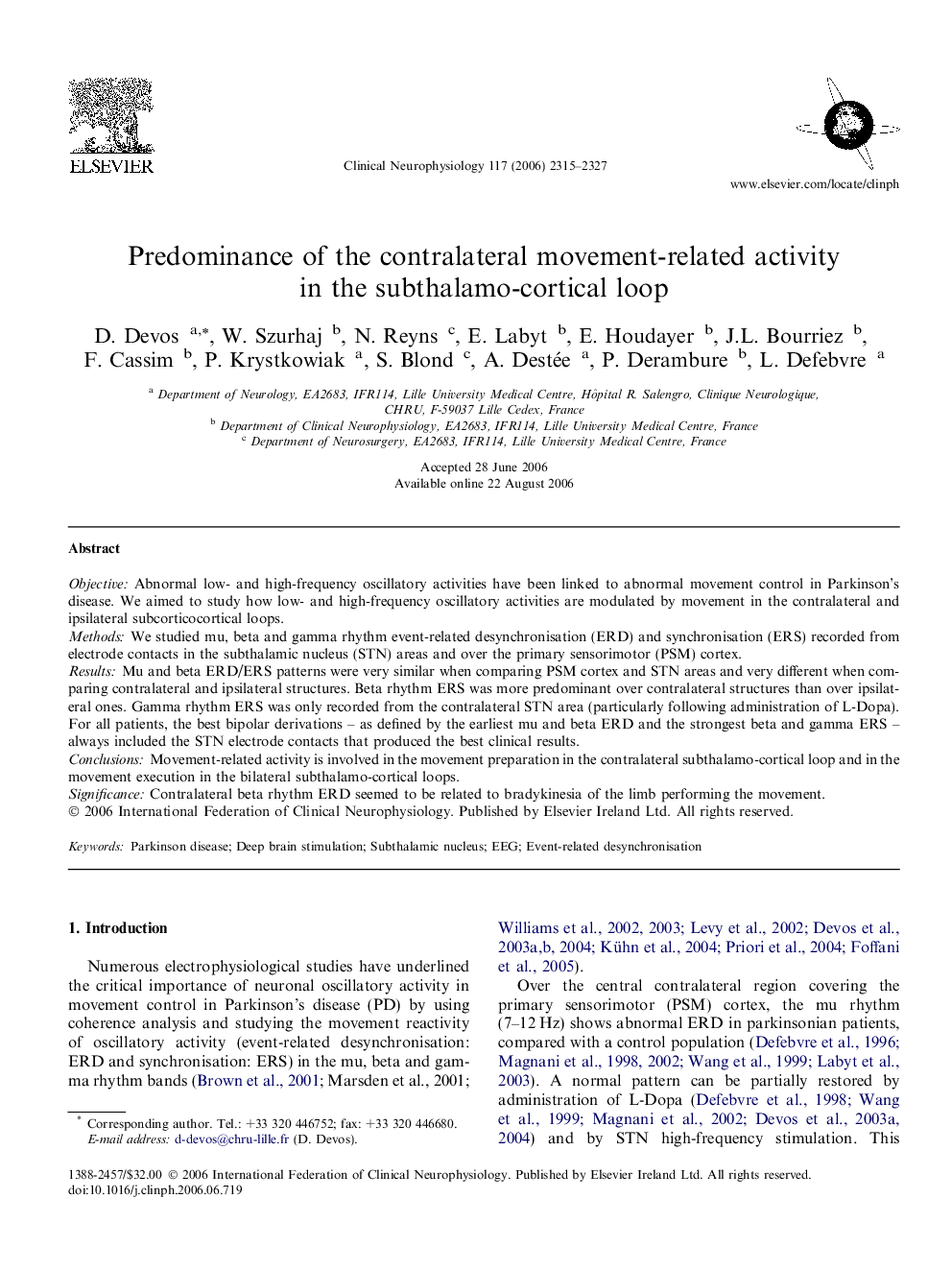| Article ID | Journal | Published Year | Pages | File Type |
|---|---|---|---|---|
| 3047683 | Clinical Neurophysiology | 2006 | 13 Pages |
ObjectiveAbnormal low- and high-frequency oscillatory activities have been linked to abnormal movement control in Parkinson’s disease. We aimed to study how low- and high-frequency oscillatory activities are modulated by movement in the contralateral and ipsilateral subcorticocortical loops.MethodsWe studied mu, beta and gamma rhythm event-related desynchronisation (ERD) and synchronisation (ERS) recorded from electrode contacts in the subthalamic nucleus (STN) areas and over the primary sensorimotor (PSM) cortex.ResultsMu and beta ERD/ERS patterns were very similar when comparing PSM cortex and STN areas and very different when comparing contralateral and ipsilateral structures. Beta rhythm ERS was more predominant over contralateral structures than over ipsilateral ones. Gamma rhythm ERS was only recorded from the contralateral STN area (particularly following administration of L-Dopa). For all patients, the best bipolar derivations – as defined by the earliest mu and beta ERD and the strongest beta and gamma ERS – always included the STN electrode contacts that produced the best clinical results.ConclusionsMovement-related activity is involved in the movement preparation in the contralateral subthalamo-cortical loop and in the movement execution in the bilateral subthalamo-cortical loops.SignificanceContralateral beta rhythm ERD seemed to be related to bradykinesia of the limb performing the movement.
